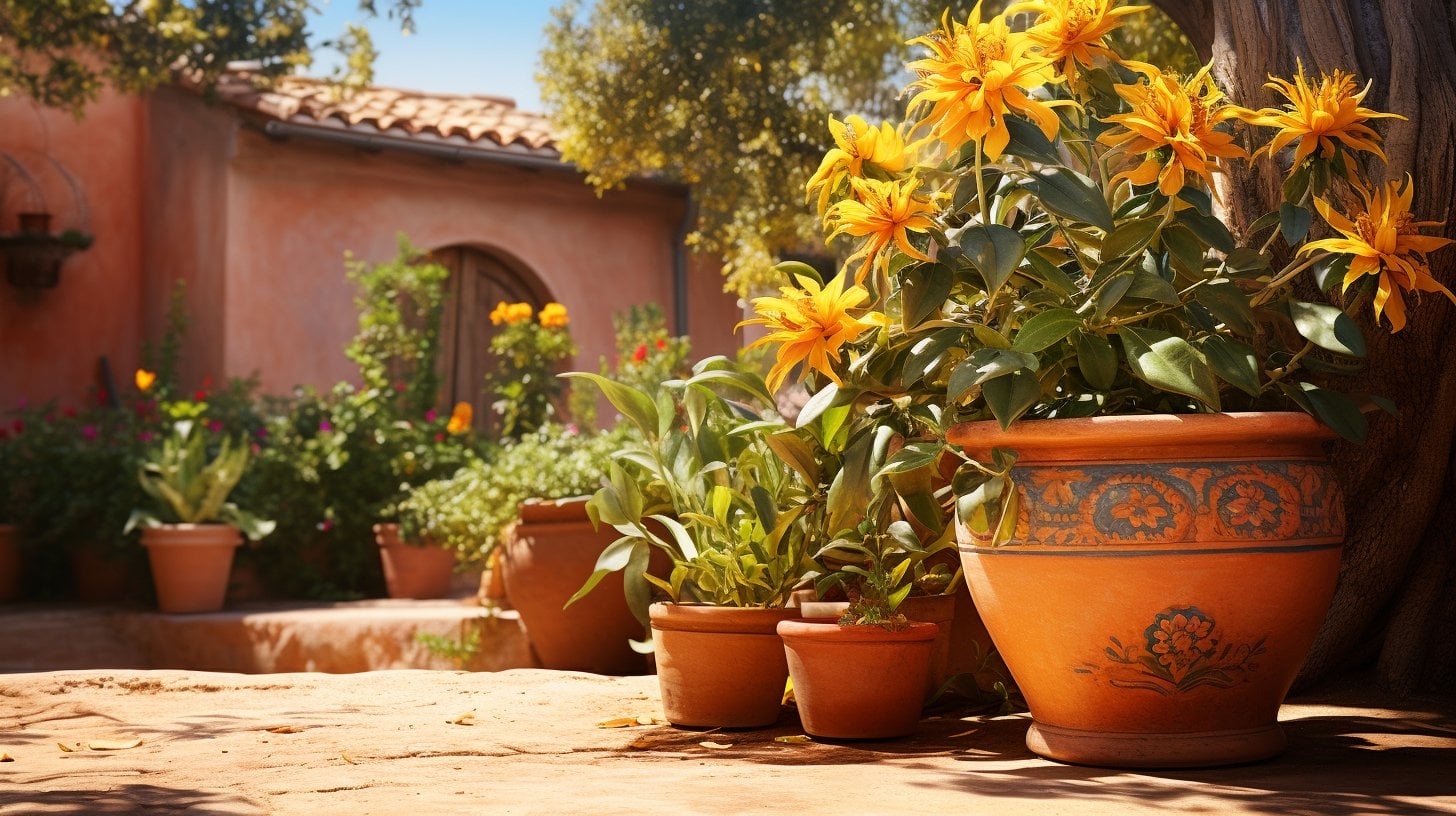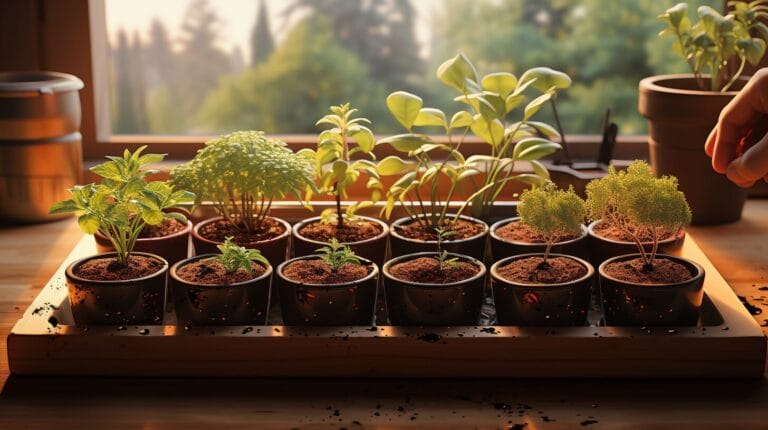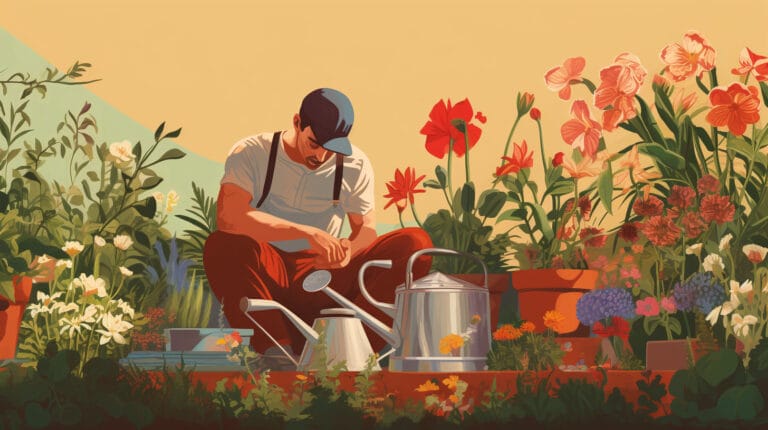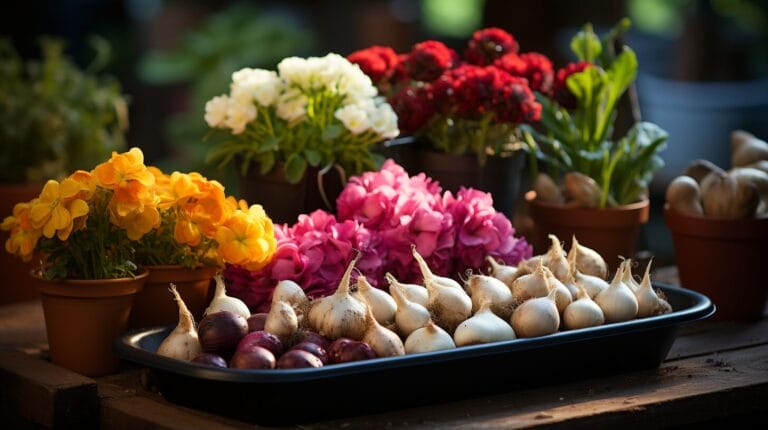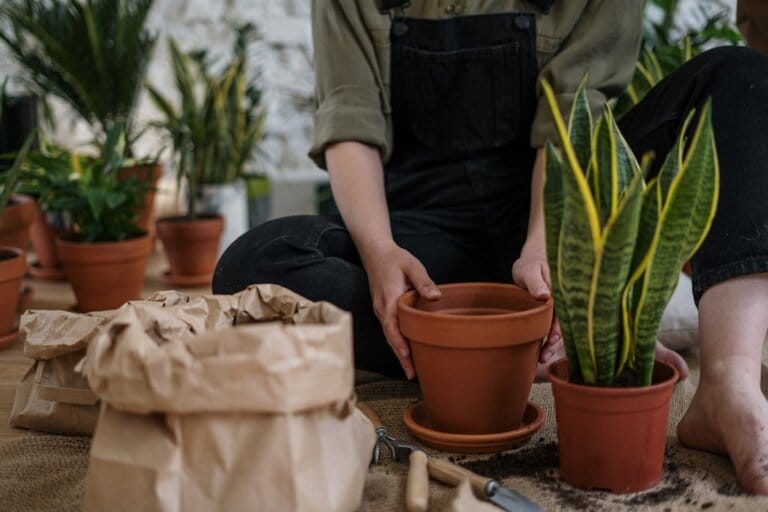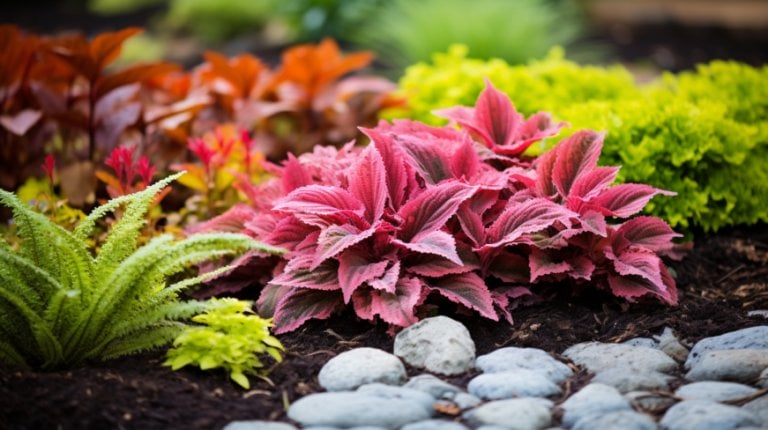Are Cement Pots Good For Plants: A Comprehensive Planter Debate
The intricacies of varied plant containers have always piqued my interest. Recently, the question, “Do cement pots benefit plants?” has been on my mind. Let’s delve into everything related to cement plant pots from the materials used and their functionality to their longevity and impact on plant health. Tag along as we explore the realm of cement plant holders.
Together, let’s explore whether these sturdy containers are the right fit for your beloved greenery or if there are better alternatives.
Key Takeaways
- They are made of calcium, silicon, aluminum, and iron, affecting soil pH and plant health.
- Concrete planters are durable and can withstand harsh weather conditions but are heavy and not easily movable.
- They can leach lime into the soil, raising its pH to alkaline levels, affecting nutrient availability, and compromising plant health.
- Cement planters have durability and insulation properties that can protect plants from extreme weather conditions and provide a stable environment for their growth.
Understanding the Makeup and Functionality of Cement Pots
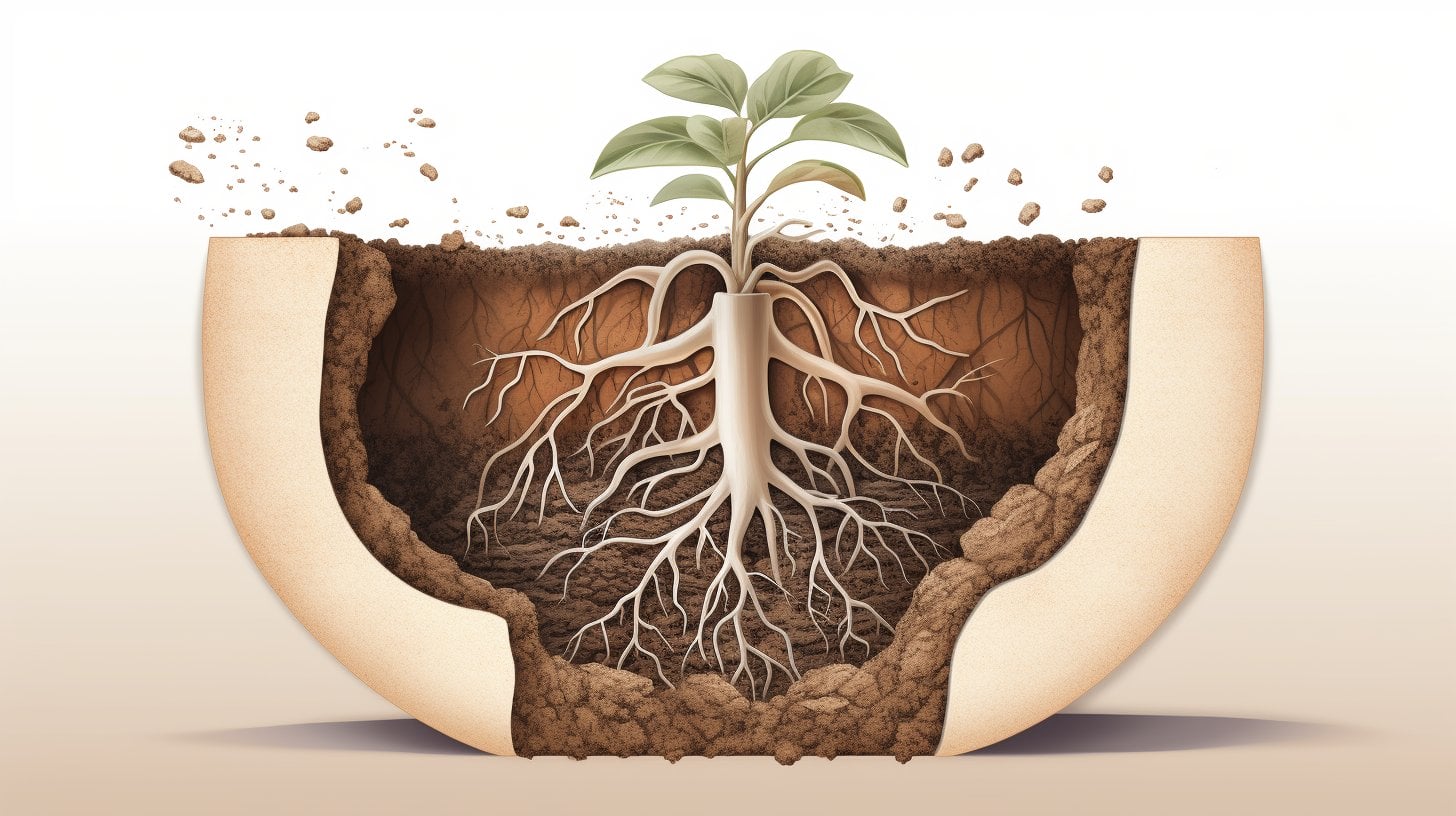
Let’s start to understand what they are made of and how their composition can affect our plants. We’ll look at the good and bad sides of using concrete planters. Lastly, we’ll discuss how it might influence the soil’s pH levels and our plants’ overall health.
Characterizing Cement: Compositional Elements and Their Effects on Plants
I’m going to delve into the compositional elements of cement and how their specific characteristics can affect plants when used in pots.
Cement contains calcium, silicon, aluminum, and iron – elements that can leach into the soil over time. The calcium, in particular, can alter the pH level of the soil, making it good for plants that thrive in alkaline conditions. However, for plants that prefer acidic soil, this could be problematic.
Silicon, on the other hand, can promote strong plant growth. Aluminum and iron are trace elements needed by plants, but in large amounts, they can be toxic. Understanding these effects on plants is crucial when deciding whether to use cement containers for your specific gardening needs.
The Pros and Cons of Concrete Planters
In discussing the pros and cons of concrete planters, it’s crucial to comprehend their makeup and functionality. Concrete planters are made from a mixture of cement, sand, and water. The pros and cons of these planters directly relate to their composition and how they function in a gardening environment.
- The longevity of concrete planters is a significant benefit. They can withstand harsh weather, making them a good choice for outdoor gardens.
- Concrete planters retain moisture well, reducing the frequency of watering.
However, there are also some drawbacks to consider:
- The weight can be a drawback, especially if frequent movement is required. You don’t have to move these heavy garden pots often.
- The alkalinity of concrete can affect the pH of the soil, which mightn’t be suitable for all plants. It can harm plants by altering the acidity of the soil.
- Lastly, concrete planters can be expensive compared to other options, like plastic pots or clay pots.
Despite these cons, the benefits of using concrete often make it good for plants.
How Cement Might Influence Soil pH and Plant Health
I’ll now delve into how the inherent alkalinity of pots could potentially influence the pH of the soil and subsequently impact plant health. Here’s what you need to know: concrete can leach lime, raising the soil’s pH into the alkaline range. This shift in soil acidity can affect the nutrients available to the plant, compromising its health.
Here’s a simple table to illustrate the effects:
| Problem | Solution |
| Concrete leaches lime | Use acidifying fertilizers |
| They need weathering | Let them sit outdoors for a few weeks |
Understanding the influence of the pH of the soil is crucial in maintaining plant health. If you’re using cement containers, be aware of their potential to alter the soil acidity and plan accordingly.
Weighing the Durability of Cement Planters
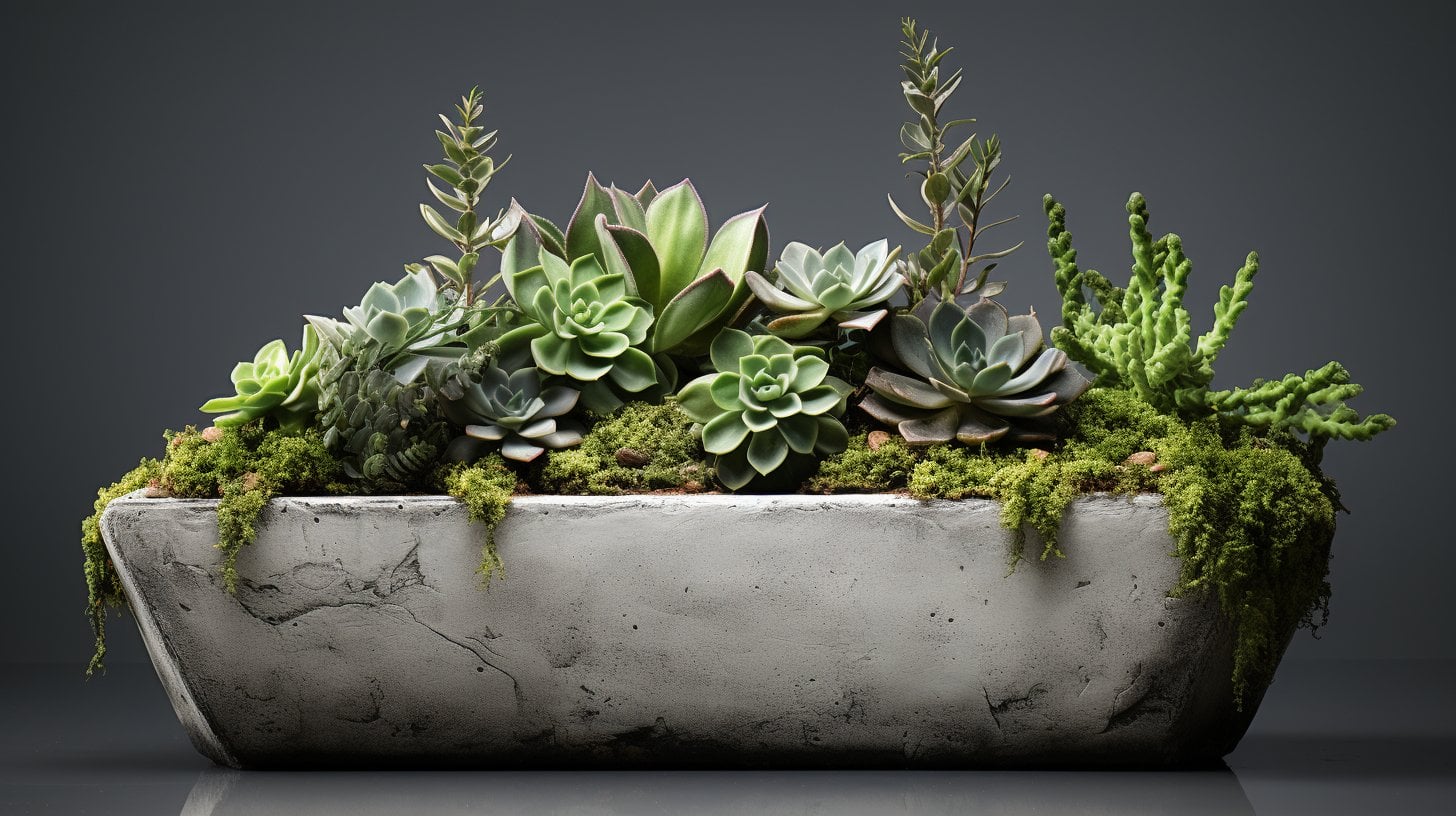
Let’s now turn our attention to the longevity of cement planters.
I’m going to discuss the longevity and resilience of these pots. Next, I will address how they hold up in cold weather. Lastly, I will talk about the role of sealing for their longevity. It’s important to know how well these planters can stand up to the test of time and weather conditions.
The Longevity and Resilience of Concrete Pots: What to Expect
I’ve found that nearly all cement planters exhibit an impressive level of longevity and resilience, lasting for many years with minimal maintenance. The longevity and resilience of concrete pots make it good for plants. It is unparalleled, and given that concrete is porous, it offers a unique advantage for plants needing well-drained soil.
However, there are key points to consider:
- Concrete pots need to be sealed. This prevents the soil from leaching lime, which can be harmful to plants.
- They can stand up to the harsh weather conditions.
- Concrete planters retain moisture longer than other materials.
- They’re heavy, which can be beneficial in windy areas.
- Concrete planters age beautifully, developing a patina that increases their aesthetic appeal.
With proper care, your concrete pots can last a lifetime.
Cold Weather and Cement Containers: How Do They Fare?
In terms of longevity, especially in cold weather conditions, I can confidently say that it holds up remarkably well. They’re designed to stand up to harsh conditions, making them a superb choice to keep your plants safe from the biting cold.
The benefits of using cement planters go beyond aesthetics. They provide a layer of barrier that helps protect delicate roots from freezing temperatures. Plus, their hefty weight ensures they won’t tip over in strong winds.
If you’ve been worried that your plants mightn’t survive the winter, I’d recommend giving them a try. They’ve proven their mettle time and time again, providing a safe, sturdy home for plants, even in the most frigid of climates.
The Importance of Sealing in Cement Planters for Their Durability
I’m going to delve into the significance of sealing when it comes to enhancing the longevity of cement planters.
Concretes are good, but when you seal a planter with a concrete sealer, you unlock the full benefits of cement. The importance of sealing in cement planters for their longevity can’t be overstated. Without proper sealing, concrete planters need constant care and attention.
Here are five reasons why sealing is crucial:
- It shields the planter from harsh weather conditions
- Sealing helps retain water, preventing the soil from drying out
- It prevents the growth of mold and algae
- It extends the lifespan of the planter
- Sealed planters require less maintenance
Sealed pots for plants can also create a better environment for plants. Unlike terracotta pots, which often allow plants to absorb chemicals from the pot, sealed concrete pots act as a barrier, making sure that the potting soil remains free of contaminants. This makes them perfect for growing various plants, including those that require a chemical-free growing environment.
Plant Health and Concrete Pots: A Matter of Insulation
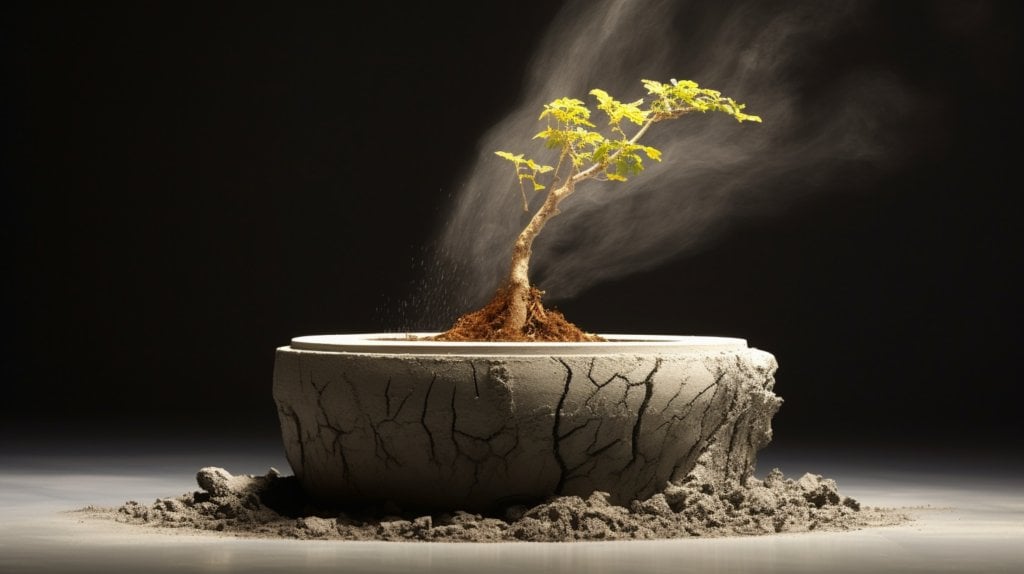
Now, let’s look at how concrete pots handle temperature extremes. We’ll discuss the insulating properties of these pots and how they affect plant roots. Lastly, I’ll touch on how to counteract cement’s natural tendencies for healthier plants.
How Does Cement Handle Heat and Cold?
Let’s delve into how it handles temperature extremes, focusing on the properties of the barriers in both hot and cold conditions. Planters made from cement are known for their ability to moderate temperature, which is crucial for plant health.
Here’s why they are great insulators:
- They provide a stable environment, buffering plants against sudden temperature changes.
- Their thick walls prevent excessive heat from reaching the roots.
- During cold weather, they protect roots from freezing.
- Their porous nature allows for air circulation, preventing overheating.
- They maintain consistent moisture levels, preventing dehydration in heat and waterlogging in the cold.
In short, the benefits of using are clear. They handle heat and cold efficiently, offering superior barriers and promoting plant health.
Insulating Properties of Cement and Their Impact on Plant Roots
I’ll be exploring the insulating properties and how they impact the health of plant roots in this section.
It’s essential to understand that pots for plants have a unique characteristic of providing a barrier to plant roots. This insulating property can impact plant roots positively by maintaining a stable temperature, thus promoting healthy growth. Unlike other materials, it protects plant roots against sudden temperature changes, which can be detrimental.
However, there’s a caveat. If not properly managed, the heat absorbed during hot weather can also stress the roots. So, are they good for plants? They can be, provided you manage the barrier effectively, taking into account your plant’s specific needs and the prevailing weather conditions.
Counteracting Cement’s Natural Tendencies for Healthier Plants
In this section, we’re diving deeper into cement’s natural tendencies and, most importantly, how to counteract them for the sake of our plants’ health. Cement container, due to their porous nature, has an impact on the soil pH, which can affect the health of your plants.
To counteract these tendencies, consider the following steps:
- Regularly monitor and adjust the pH of the soil
- Use a good quality potting mix
- Ensure proper drainage to avoid water pooling
- Place it in areas of moderate temperature to leverage their insulating properties
- Regularly apply a sealant to the inner surface of the pot to prevent leaching
With these counteracting measures, you can take advantage of the benefits while ensuring healthier plants.
Cement Pots and Drainage: The Porous Plant Pot Dilemma
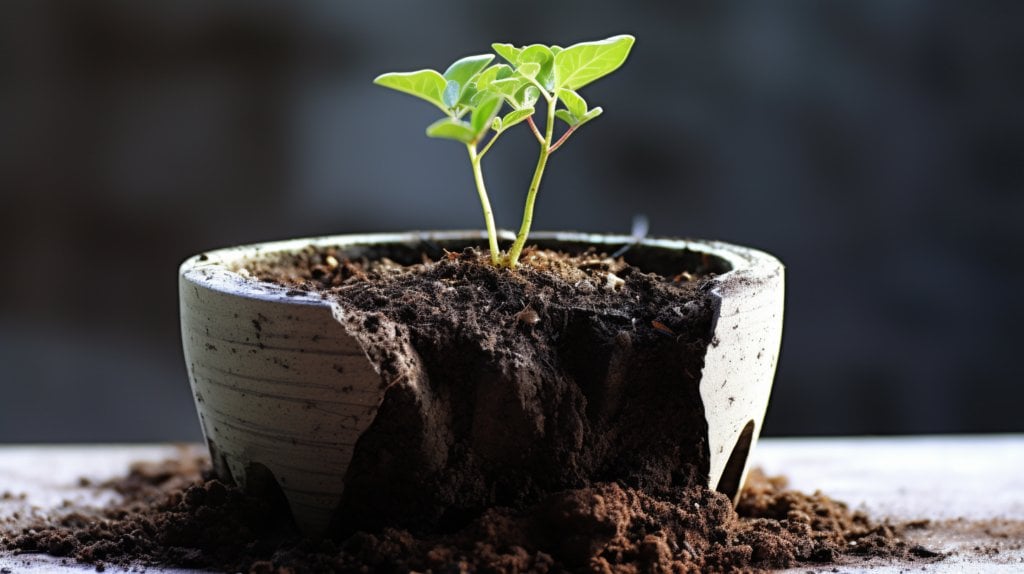
Next, let’s tackle the issue of drainage.
I’m going to discuss how to ensure good drainage in concrete planters, if leaching is a problem with cement planters and the role of drainage outlets in pots.
It’s a lot to unpack, but it’s all important for understanding the pros and cons of using it for your plants.
Ensuring Good Drainage in Concrete Planters
I’ve found that many gardeners often struggle with ensuring adequate drainage for their plants when using cement containers. It’s important to understand that concrete planters require good drainage to keep your plants healthy. Here are some points that could help:
- Creating drainage outlets at the bottom of the pot is integral. They allow excess water to exit, preventing root rot.
- Layer the bottom of the pot with small pebbles before adding the soil inside. This aids in water filtration.
- Use well-draining soil to further promote ideal drainage.
- Consider using a pot with feet or a plant stand to elevate it, allowing water to flow freely.
- Regularly checking the soil’s moisture levels will help in ensuring adequate drainage in concrete planters.
Mastering these techniques will help your plants thrive in their concrete homes.
Is Leaching a Problem With Cement Planters?
Let’s tackle another potential issue with cement planters, which is the possibility of harmful substances leaching into the soil. Cement containers are porous and allow air to move freely, which is generally great for root health. However, this also means that alkaline chemicals can leach from the pot into the soil, potentially harming your plants.
This is where the dilemma comes in: do the benefits of air movement outweigh the risks of chemicals entering the soil? It’s a tough call.
One solution is to seal the pots. Yes, planters need to be sealed to prevent leaching. This negates the permeability benefit, but it keeps your soil safe.
The Role of Drainage Holes in Cement and Concrete Pots
In exploring the balance between plant health and pot design, I can’t ignore the crucial role of drainage outlets in pots. These holes are essential for the overall well-being of your plants, particularly the roots. They ensure that water doesn’t stagnate in your plant holder, thereby preventing root rot.
Here’s why they are so vital:
- Aeration: They allow air to reach the roots of your plants.
- Avoids Overwatering: Excess water drains out, preventing waterlogging.
- Salt Buildup: They allow flushing out of accumulated salts.
- Root Health: They help maintain healthy, happy roots.
- Adaptability: The plant can adapt to its environment better.
In essence, cement containers with proper drainage outlets can provide a balanced and healthful environment for your plants. Pots for plants made from cement or concrete may lack these outlets, but they can be added to ensure your plants grow well and avoid issues like root rot.
Pots are also available in various materials, such as metal planters or terracotta pots. While these materials have their benefits, they may need to be watered carefully to avoid overwatering and ensure proper drainage.
Exploring Alternatives: Other Types of Pots for Your Plants

Now, let’s consider some other options for our plant homes. How do terracotta, plastic, metal, and ceramic planters stack up against cement containers? We’re about to find out.
Earthen Delight: Terracotta Planters and Their Benefits
I’m excited to delve into the rustic charm of terracotta planters, an alternative to cement containers that come with a whole host of benefits for your plants.
Terracotta pots are an earthen delight, offering numerous advantages for growing plants. These benefits include:
- Breathability: Terracotta pots allow your plants’ roots to breathe.
- Natural: Made from natural clay, terracotta planters are also environmentally friendly.
- Aesthetics: Their earthy, rustic look can enhance the beauty of any plant.
- Absorbs excess water: Terracotta planters absorb excess water, reducing the risk of overwatering.
- Durability: Terracotta pots are highly durable and can withstand harsh weather conditions.
Plastic Planters: A Viable Alternative to Cement Planters?
Often, I find myself considering plastic planters as a viable, yet frequently overlooked, alternative to cement containers for my plants.
Plastic planters, in contrast, don’t retain as much heat, which can harm your plants. Their lightweight nature makes them easy to move around, which is ideal for those who enjoy rearranging their garden layout.
However, they aren’t as durable and can deteriorate over time under certain conditions. Yet, for those seeking a temporary solution or for indoor use, plastic planters are ideal. They come in a variety of designs, too, adding aesthetic appeal.
Ultimately, to choose the best planter, it’s important to consider the specific needs of your plants and your personal preference.
Durable and Decorative: Metal and Ceramic Planters for Your Green Space
In my quest for the perfect planters, I’ve found that metal and ceramic pots offer a durable and decorative alternative to cement ones. Not only do they serve a practical purpose, but they also bring a certain aesthetic appeal to your green space.
Here are a few reasons why I’m drawn to metal and ceramic planters:
- They’re durable: Both metal and ceramic pots and planters are sturdy and can withstand the elements.
- They’re decorative: These planters come in a variety of designs that can complement any décor.
- They’re versatile: You can use them indoors or outdoors.
- They’re unique: Each ceramic planter is one-of-a-kind, adding an artistic touch to your space.
- They’re perfect for green space: These planters help your plants thrive while enhancing the beauty of your garden.
Frequently Asked Questions
What Is the Average Cost of Cement Containers Compared to Other Types of Plant Pots?
In my experience, they typically cost more than plastic or terracotta ones. However, their durability and aesthetic appeal often justify the extra expense. It’s a worthwhile investment for long-lasting, stylish plant displays.
How Do I Clean and Maintain Cement Containers to Ensure They Last Long?
Cleaning and maintaining them is quite straightforward. I simply scrub them with a mixture of vinegar and water, rinse thoroughly, and let them dry completely before repotting. It’s essential to prevent moisture buildup.
Can It Be Used Indoors, and What Precautions Should I Take if So?
Absolutely, you can use it indoors. Be mindful of their weight when moving them. Also, ensure they’ve got drainage holes to prevent waterlogging. Use a saucer to avoid water stains on your indoor surfaces.
What Are Some Creative Ideas for Decorating or Painting?
Decorating them can be a fun DIY project. I love using acrylic paints for vibrant designs. Stencils, sponges, or even just freehand can create unique patterns. Don’t forget to seal it afterward, though!
Can I Make My Own at Home, and What’s the Process?
Absolutely, you can make your own at home! It’s a simple process involving cement mix, sand, water, and mold. I’ll walk you through the steps to create your unique planters.
Conclusion
So, are cement pots good for plants? Absolutely! They’re durable, provide great insulation, and with proper drainage, they can be ideal homes for your green friends.
But it’s also important to remember that there are plenty of other potting options out there. So, while it can be a fantastic choice, don’t be afraid to explore what else is out there to keep your plants happy and healthy.

